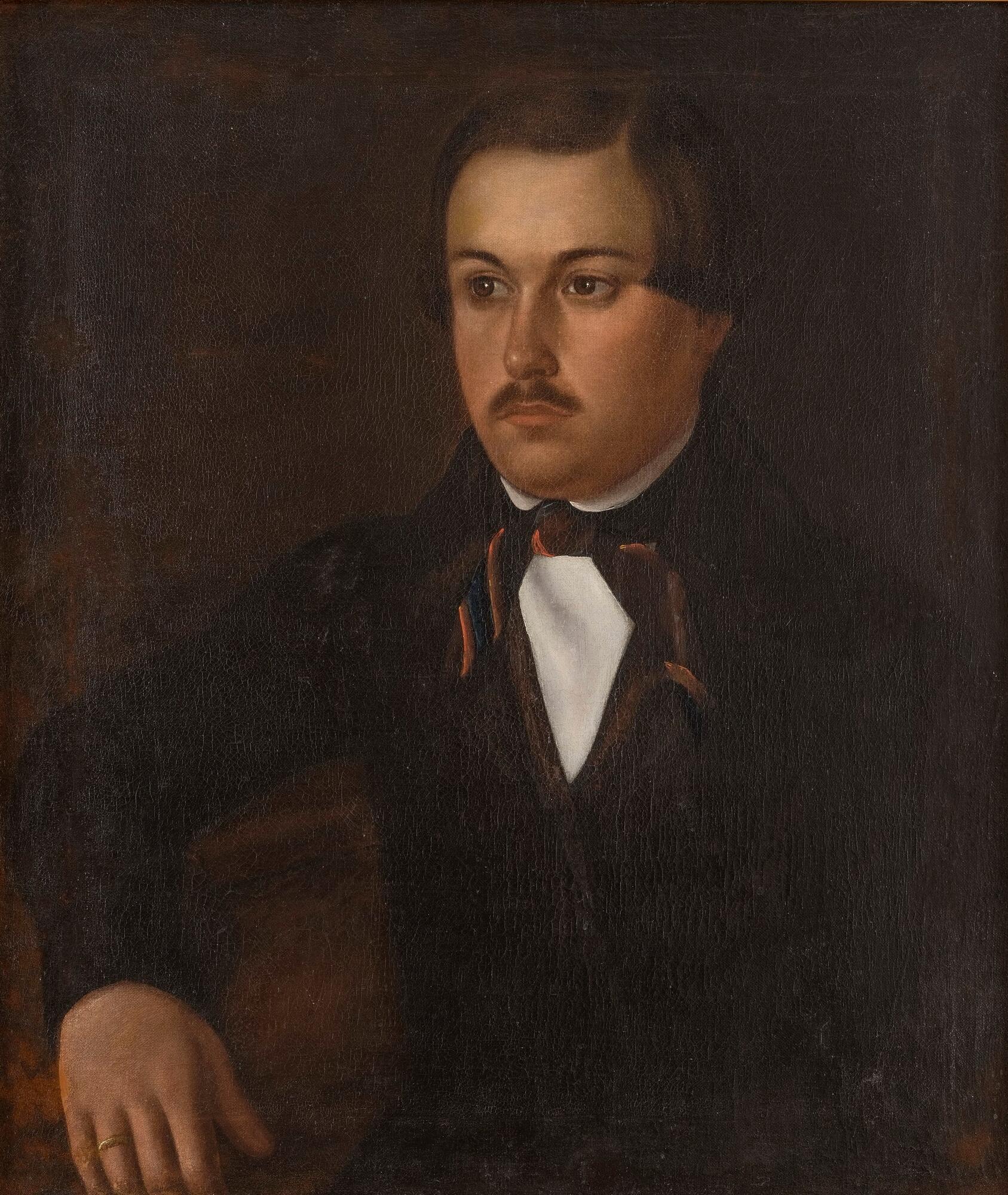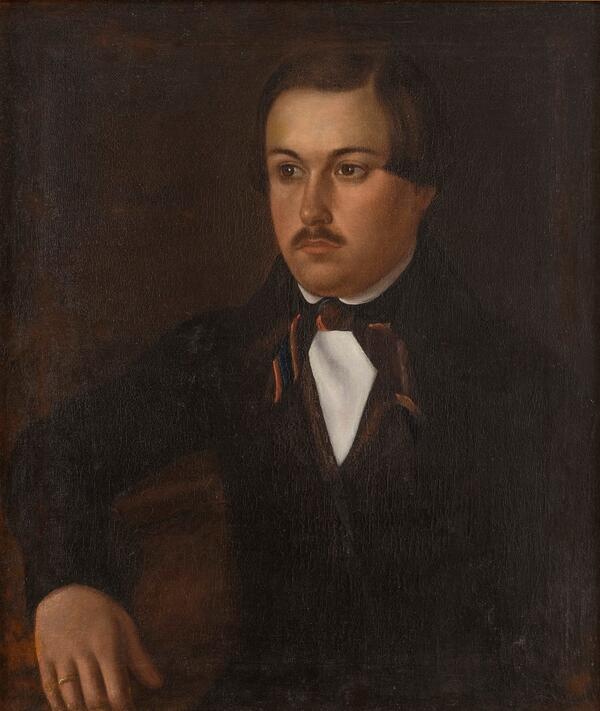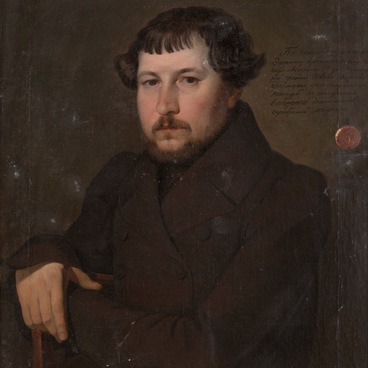The genre of a merchant portrait, in which the artist Afanasy Veselov painted the merchant Timothy Suzdaltsev, is commonly referred to as primitive art. It emerged by the 18th century, when the merchant class became one of the most numerous classes. Many artists at that time painted merchants and merchants’ wives in their paintings.
Suzdaltsev poses for the artist in a dark fitted coat and a snow-white shirt with a small rounded collar. Underneath the collar, a striped neck scarf with loose ends is tied. The merchant’s right arm is bent as if leaning on the back or armrest of the armchair.
Portraits became a symbol of high status in society. Initially, only royalty and aristocrats commissioned paintings. Later, merchants also began to order paintings for their homes. However, the works of court painters were expensive, so merchant portraits were usually created by provincial masters. Many of them remained anonymous.
The portraits of provincial painters were inferior in their artistic techniques and skill to the works created by professional artists. That is why they were often compared with cheap popular art. In them the proportions were not so strictly observed, many small details lacked.
At the same time, merchant portraits were created according to strict rules. The main attention was paid to the models: the most carefully painted faces and hands, they tried to achieve maximum similarity.
The background on merchant portraits was not supposed to distract attention. That’s why it was usually monochrome and muted-colored. The interior details were not depicted at all or just one of them. It should have additionally disclosed the portrayed or their way of life: for example, a chair on which a merchant worked in his office, or a book in his hands.
In the portraits, the merchants were painted chest-length or waist-length, and the master chose a three-quarter angle. Such an angle became canonical for a reason: artists usually painted paired portraits — a merchant and his wife. They were depicted looking at each other, with the woman at her husband’s right hand.
Local bright colors may have been used for dresses, suits, or individual pieces of clothing. The folds of clothing and the texture of materials were not particularly created. The exception was the details that indicated the class and social status of the model: large expensive jewelry, merchant awards, wedding rings.
Suzdaltsev poses for the artist in a dark fitted coat and a snow-white shirt with a small rounded collar. Underneath the collar, a striped neck scarf with loose ends is tied. The merchant’s right arm is bent as if leaning on the back or armrest of the armchair.
Portraits became a symbol of high status in society. Initially, only royalty and aristocrats commissioned paintings. Later, merchants also began to order paintings for their homes. However, the works of court painters were expensive, so merchant portraits were usually created by provincial masters. Many of them remained anonymous.
The portraits of provincial painters were inferior in their artistic techniques and skill to the works created by professional artists. That is why they were often compared with cheap popular art. In them the proportions were not so strictly observed, many small details lacked.
At the same time, merchant portraits were created according to strict rules. The main attention was paid to the models: the most carefully painted faces and hands, they tried to achieve maximum similarity.
The background on merchant portraits was not supposed to distract attention. That’s why it was usually monochrome and muted-colored. The interior details were not depicted at all or just one of them. It should have additionally disclosed the portrayed or their way of life: for example, a chair on which a merchant worked in his office, or a book in his hands.
In the portraits, the merchants were painted chest-length or waist-length, and the master chose a three-quarter angle. Such an angle became canonical for a reason: artists usually painted paired portraits — a merchant and his wife. They were depicted looking at each other, with the woman at her husband’s right hand.
Local bright colors may have been used for dresses, suits, or individual pieces of clothing. The folds of clothing and the texture of materials were not particularly created. The exception was the details that indicated the class and social status of the model: large expensive jewelry, merchant awards, wedding rings.



